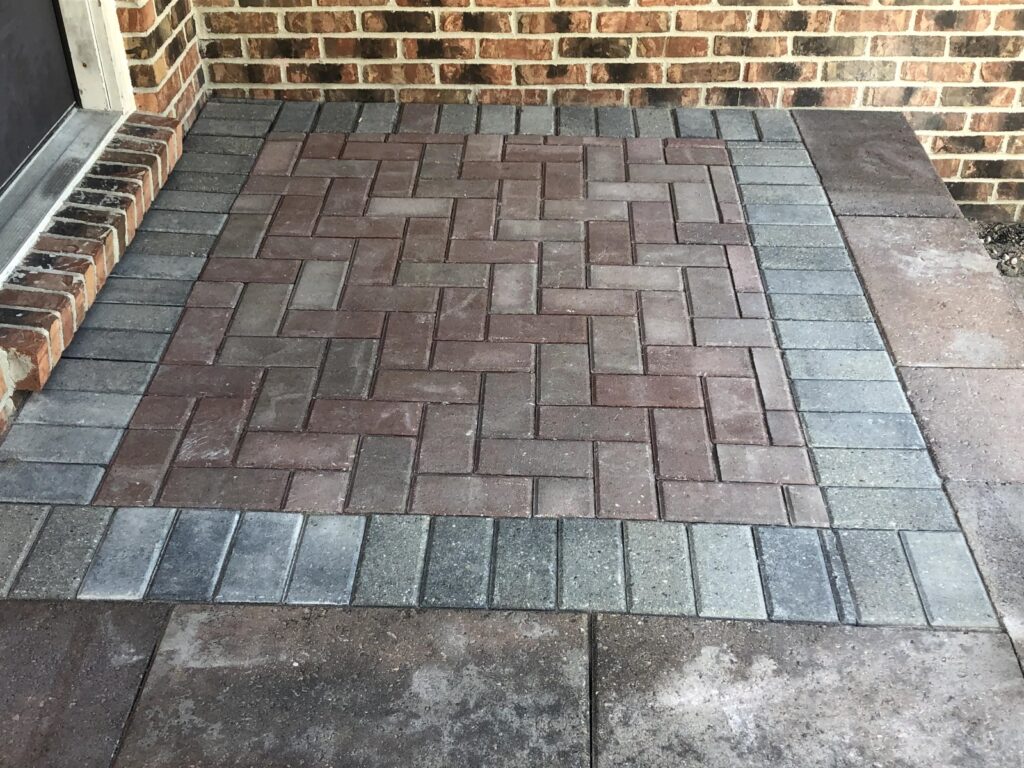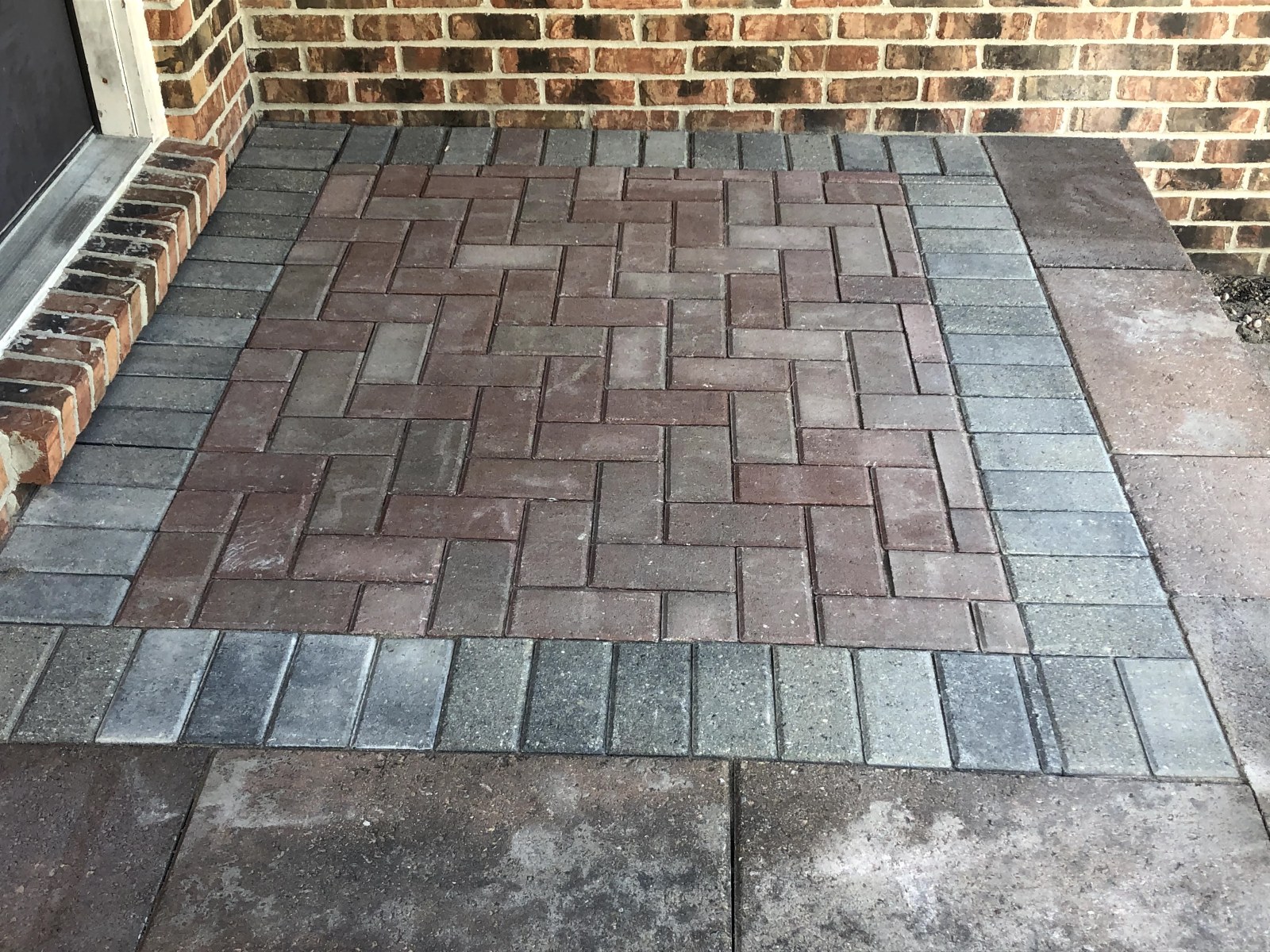
Elevate Your Outdoor Space: A Comprehensive Guide to Landscaping Brick Pavers
Landscaping brick pavers offer a timeless and versatile solution for enhancing the beauty and functionality of any outdoor space. From patios and walkways to driveways and pool decks, brick pavers provide a durable, aesthetically pleasing, and customizable surface that can transform your property. This comprehensive guide will delve into the various aspects of landscaping with brick pavers, covering everything from design considerations and material selection to installation techniques and maintenance tips. Whether you’re a seasoned DIY enthusiast or just beginning to explore the possibilities of outdoor landscaping, this article provides valuable insights to help you create the outdoor oasis of your dreams using landscaping brick pavers.
Why Choose Landscaping Brick Pavers?
Before diving into the specifics, it’s crucial to understand the advantages of opting for landscaping brick pavers over other materials. Here are several compelling reasons:
- Durability: Brick pavers are incredibly durable and can withstand heavy foot traffic, vehicular loads, and harsh weather conditions. They are less prone to cracking or chipping compared to concrete or asphalt.
- Aesthetics: With a wide range of colors, shapes, and patterns available, landscaping brick pavers offer unparalleled design flexibility. They can complement any architectural style and add a touch of elegance to your outdoor space.
- Low Maintenance: Once installed, brick pavers require minimal maintenance. Regular sweeping and occasional cleaning are usually sufficient to keep them looking their best.
- Easy Repair: Individual pavers can be easily replaced if damaged, without the need to replace the entire surface. This makes repairs quick and cost-effective.
- Permeability: Permeable landscaping brick pavers are an environmentally friendly option that allows rainwater to seep into the ground, reducing runoff and preventing erosion.
- Increased Property Value: Well-designed and installed brick paver projects can significantly increase the value of your property.
Planning Your Brick Paver Project
Proper planning is essential for a successful landscaping brick pavers project. Consider the following factors:
Define the Project Scope
Clearly define the area you want to pave. Is it a small patio, a long walkway, or a large driveway? Measure the dimensions accurately to determine the amount of materials needed. Consider the existing landscape and how the pavers will integrate with the surrounding elements.
Choose the Right Paver Style and Color
Select pavers that complement your home’s architectural style and your personal preferences. Consider the color palette of your home’s exterior and choose pavers that harmonize with it. Different paver styles, such as rectangular, square, or interlocking, offer varying aesthetic appeals. Sample pavers should be viewed in natural light to ensure the color is as expected.
Consider the Pattern
The pattern in which you lay the landscaping brick pavers can significantly impact the overall look of your project. Common patterns include running bond, herringbone, basketweave, and circular. Choose a pattern that suits the shape and size of your paved area and complements the style of your home. More complex patterns may require more cutting and fitting.
Determine the Base Preparation Requirements
Proper base preparation is crucial for the longevity and stability of your paver project. The base typically consists of a compacted sub-base, a layer of gravel, and a layer of sand. The depth of each layer will depend on the soil conditions and the intended use of the paved area. A well-compacted base prevents settling and shifting of the pavers over time. Understanding the soil composition is key to ensuring adequate drainage and stability.
Plan for Drainage
Ensure that your paved area has adequate drainage to prevent water from pooling on the surface. This can be achieved by sloping the surface slightly away from your home or by installing drainage systems. Permeable landscaping brick pavers can also help to improve drainage. Proper drainage is essential to prevent water damage and extend the lifespan of your paver project.
Selecting the Right Materials
Choosing high-quality materials is essential for a long-lasting and visually appealing landscaping brick pavers project. Here’s a breakdown of the key materials you’ll need:
Brick Pavers
Select pavers from a reputable manufacturer that meet industry standards for durability and color consistency. Consider the size, shape, and color of the pavers to achieve the desired aesthetic. Brick pavers are available in various materials, including clay, concrete, and natural stone. Clay pavers offer a classic look, while concrete pavers provide greater design flexibility and affordability. Natural stone pavers offer a unique and luxurious appearance.
Base Materials
Use high-quality gravel and sand for the base of your paver project. The gravel should be well-graded and compacted to provide a stable foundation. The sand should be clean and free of organic matter to ensure proper drainage. The type of soil present in your area will influence the choice of base materials and their thickness.
Edging Materials
Edging materials are used to contain the pavers and prevent them from shifting. Options include plastic edging, metal edging, concrete curbing, and natural stone. Choose an edging material that complements the style of your pavers and provides adequate support. Edging helps maintain the integrity of the paved area and prevents the pavers from spreading.
Joint Sand
Joint sand is used to fill the gaps between the pavers and provide stability. Polymeric sand is a popular choice because it hardens when wet, preventing weeds from growing and minimizing erosion. Choose a joint sand that matches the color of your pavers and complements the overall design. The sand should be properly compacted to ensure the pavers are tightly interlocked.
Installation Techniques for Landscaping Brick Pavers
Proper installation is critical for the success of your landscaping brick pavers project. Here’s a step-by-step guide:
Excavation
Excavate the area to the required depth, typically 6-12 inches, depending on the intended use and soil conditions. Remove any vegetation, topsoil, and debris. Ensure that the excavation is level and has a slight slope for drainage. Proper excavation is the foundation for a stable and long-lasting paver project.
Base Preparation
Compact the sub-base using a plate compactor. Add a layer of gravel, typically 4-8 inches thick, and compact it thoroughly. Add a layer of sand, typically 1-2 inches thick, and level it carefully. The base should be smooth, even, and well-compacted to provide a stable foundation for the pavers. Inadequate base preparation is a common cause of paver failure.
Paver Laying
Begin laying the pavers according to your chosen pattern. Use a rubber mallet to gently tap the pavers into place. Ensure that the pavers are level and evenly spaced. Cut pavers as needed to fit around edges and obstacles. Accurate paver laying is essential for a visually appealing and structurally sound surface. Consider using a paver installation tool to ensure consistent spacing.
Joint Sand Application
Sweep joint sand into the gaps between the pavers. Use a plate compactor with a rubber mat to compact the sand and interlock the pavers. Repeat the process until the joints are completely filled. Water the pavers to activate the polymeric sand, if used. Proper joint sand application prevents weed growth and enhances the stability of the paved area. Over time, the joint sand may need to be replenished.
Edging Installation
Install the edging materials around the perimeter of the paved area to contain the pavers and prevent them from shifting. Secure the edging with stakes or concrete, depending on the type of edging used. Edging provides a clean and finished look and helps to maintain the integrity of the paver project.
Maintaining Your Landscaping Brick Pavers
With proper care, your landscaping brick pavers can last for many years. Here are some maintenance tips:
- Regular Sweeping: Sweep the pavers regularly to remove dirt, leaves, and debris.
- Occasional Cleaning: Clean the pavers with a mild detergent and water to remove stains and grime.
- Weed Control: Apply a weed killer to prevent weeds from growing in the joints between the pavers.
- Sealing: Consider sealing the pavers to protect them from stains and fading.
- Joint Sand Replenishment: Replenish the joint sand as needed to maintain the stability of the pavers.
- Repairing Damaged Pavers: Replace any damaged pavers as soon as possible to prevent further damage.
Cost Considerations
The cost of a landscaping brick pavers project can vary depending on several factors, including the size of the area, the type of pavers used, and the complexity of the design. Consider the following costs:
- Materials: The cost of the pavers, base materials, edging materials, and joint sand.
- Labor: The cost of hiring a professional installer.
- Equipment Rental: The cost of renting equipment, such as a plate compactor and a paver saw.
- Permits: The cost of obtaining any necessary permits.
Obtain quotes from several contractors to compare prices and services. Factor in the long-term benefits of brick pavers, such as durability and low maintenance, when evaluating the cost.
DIY vs. Professional Installation
While it’s possible to install landscaping brick pavers yourself, it’s important to consider the pros and cons of DIY versus professional installation.
DIY Installation
Pros: Lower cost, personal satisfaction.
Cons: Time-consuming, physically demanding, potential for errors.
Professional Installation
Pros: Expertise, efficiency, guaranteed results.
Cons: Higher cost.
If you have experience with landscaping projects and are comfortable with heavy lifting and detailed work, DIY installation may be a viable option. However, if you lack experience or prefer to ensure a professional-quality result, hiring a contractor is the best choice. [See also: Finding the Right Landscaping Contractor]
Conclusion
Landscaping brick pavers offer a durable, aesthetically pleasing, and versatile solution for enhancing your outdoor space. By carefully planning your project, selecting the right materials, and following proper installation techniques, you can create a beautiful and functional outdoor area that will last for years to come. Whether you choose to DIY or hire a professional, investing in landscaping brick pavers is a worthwhile investment that will add value and enjoyment to your home. Remember to prioritize proper base preparation, drainage, and maintenance to ensure the longevity of your paver project. With a little effort and attention to detail, you can transform your outdoor space into a stunning oasis using landscaping brick pavers.

